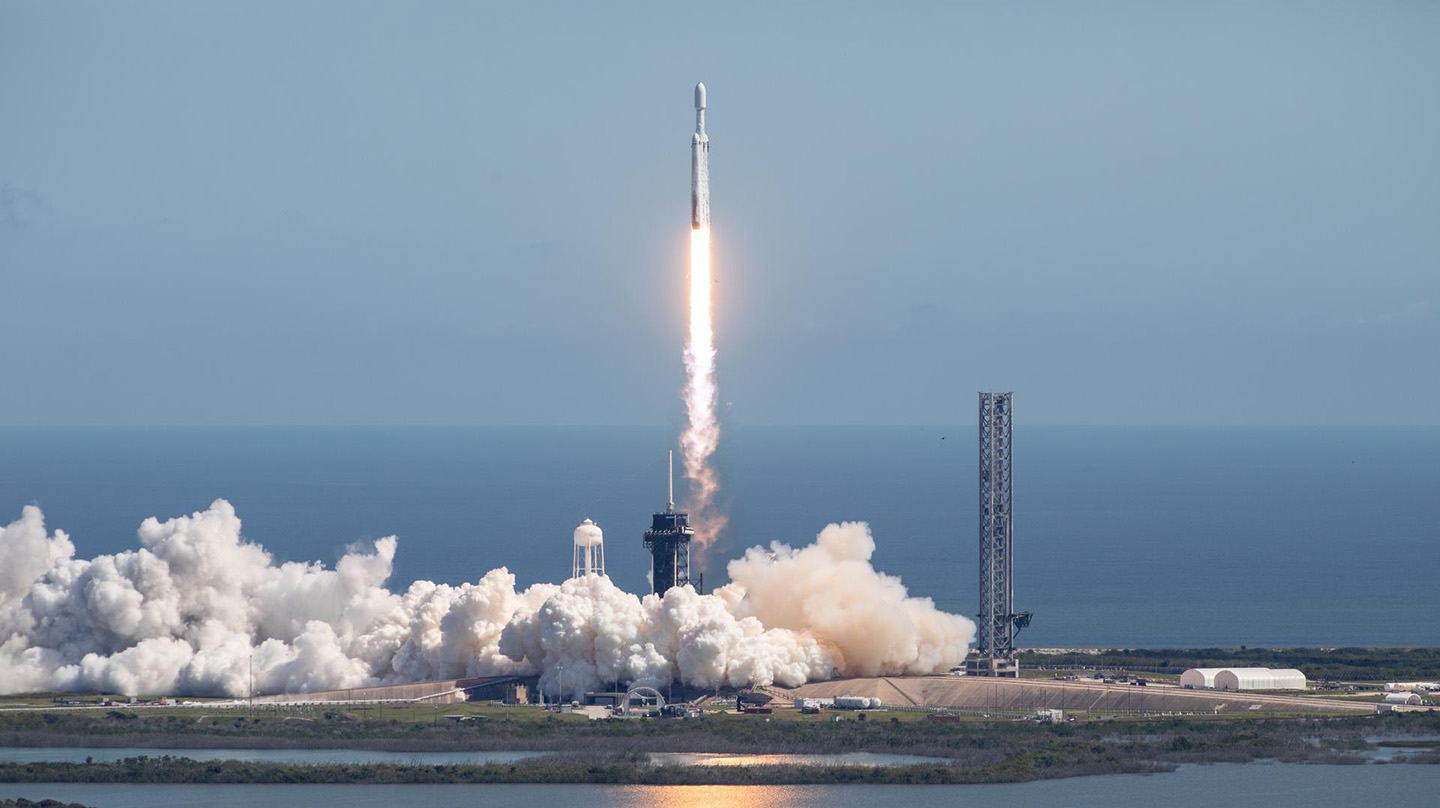Press Release
Liftoff! NASA’s Europa Clipper Blasts Off in Historic Mission to Jupiter’s Icy Ocean Moon
Racing against a backdrop of a bright blue sky in the midday Sun, NASA’s Europa Clipper spacecraft climbed into the sky atop a SpaceX Falcon Heavy rocket on Oct. 14.
Lifting off at 12:06 p.m. EDT from Space Launch Complex 39A at NASA’s Kennedy Space Center in Cape Canaveral, Florida, Europa Clipper’s successful launch marks the first step in the mission’s 5.5-year journey to Jupiter and its ice-covered moon Europa — a place believed to potentially have all the ingredients for life as we know it, including an ocean under its surface with more water than Earth’s oceans combined.
“Congratulations to our Europa Clipper team for beginning the first journey to an ocean world beyond Earth,” said NASA Administrator Bill Nelson. “NASA leads the world in exploration and discovery, and the Europa Clipper mission is no different. By exploring the unknown, Europa Clipper will help us better understand whether there is the potential for life not just within our solar system, but among the billions of moons and planets beyond our Sun.”
Developed by NASA’s Jet Propulsion Laboratory (JPL) in partnership with the Johns Hopkins Applied Physics Laboratory (APL) in Laurel, Maryland, Europa Clipper is the first mission to focus solely on Europa, intending to unravel the moon’s secrets and determine whether life could have emerged there.
“Europa Clipper’s launch marks a momentous occasion for the space science community,” said Bobby Braun, head of APL’s Space Exploration Sector. “The immense challenges of this mission required a partnership that brought together the best of both JPL and APL, and made us each better by working and learning together. I am very proud of this entire team and excited to see this pioneering spacecraft on its way.”
APL engineers and scientists had a critical role in the design, development and testing of the Europa Clipper spacecraft and its instruments. Furthering the collaboration with JPL, the APL team is thrilled to now turn its attention to mission operations.
Two-way communication with the spacecraft was established a little over an hour after launch, followed shortly after by a stream of telemetry data confirming the spacecraft was in good health and operating as expected. As the mission approached its third hour, Europa Clipper’s enormous solar panels were finally deployed, slowly unfolding for 30 minutes to reach their impressive width of more than 100 feet (30.5 meters) — about the length of a basketball court.
Europa Clipper now begins its mini tour of the inner solar system. A short swing by Mars in February 2025 will accelerate the spacecraft and adjust its trajectory, lining it up for an encounter with Earth in December 2026. The flyby with our home planet will be the final gravitational slingshot, pushing the spacecraft into high gear and propelling it out to Jupiter. As it begins its approach, Europa Clipper will slip by Jupiter’s largest moon Ganymede, using its gravity to help slow and settle the spacecraft into orbit around Jupiter in April 2030.
In addition to Ganymede’s gravity, 24 small engines, each just 3 to 4 inches (8 to 10 centimeters) wide, will insert the spacecraft into its science orbit. A part of the APL-led propulsion module of the Europa Clipper spacecraft, the engines will operate eight at a time, burning red-hot for at least six hours and consuming approximately half of the spacecraft’s propellant to put Europa Clipper into orbit.
Over the course of 49 flybys by Europa, the Europa Clipper spacecraft’s sophisticated suite of science instruments will embark on an in-depth exploration of Europa’s interior, composition and geology to determine its habitability.
APL developed and built multiple instruments in that effort. These include the dual-camera Europa Clipper Imaging System (EIS) that will map the surface in unprecedented high resolution, uncovering the secrets of Europa’s enigmatic geology and searching for evidence of currently active plumes; part of the Mapping Imaging Spectrometer for Europa (MISE), which will harness infrared light to decipher the composition of Europa’s surface; and the Plasma Instrument for Magnetic Sounding (PIMS), which, in conjunction with the Europa Clipper Magnetometer (ECM), will provide critical insights about the size and salinity of Europa’s subsurface ocean.
“Seeing Europa Clipper in space fills me with a sense of pride and accomplishment,” said Tom Magner, Europa Clipper assistant project manager. “After years of tireless design, development, testing and troubleshooting, it’s awe-inspiring to see the culmination of all our work finally on its way. I’m beyond proud of the team that brought this mission to life and cannot wait to see the groundbreaking discoveries that this mission will make.”
Managed by Caltech in Pasadena, California, JPL leads the development of the Europa Clipper mission in partnership with APL for NASA’s Science Mission Directorate in Washington. APL designed the main spacecraft body in collaboration with JPL and NASA’s Goddard Space Flight Center, Marshall Space Flight Center (MSFC) and Langley Research Center. The Planetary Missions Program Office at MSFC in Huntsville, Alabama, executes program management of the Europa Clipper mission.
For more information about the Europa Clipper mission, visit the Europa Clipper mission site.

